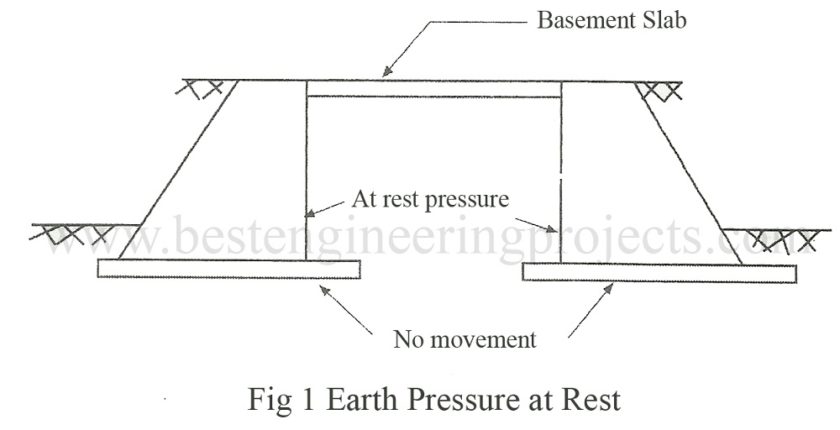When a soil mass gets deposited naturally or artificially, the coefficient of earth pressure attains a value known as coefficient of earth pressure at rest (K0) which is intermediate between coefficient of active earth pressure (Ka) and coefficient of passive earth pressure (Kp) values. In this case the horizontal stress is given by,
—————————–(1)
Where, = Vertical Stress at depth ‘z’
= Unit weight of soil
z = Depth below ground surface
The value of K0 depends upon the relative density of sand, and the process by which the process of deposition has taken place. If the process does not involve artificial tamping, the value of K0 ranges from about 0.4 for loose sand to 0.6 for dense sand. Artificial tamping increases the value of K0 which is about 0.8.
Derivation of earth pressure at rest (K0)
The value of K0 can be obtained by the theory of elasticity. Consider a cylindrical sample of soil which is acted upon by stresses , in three principal directions. Let
be the strain induced in the direction of
. Then we can write,
———————(2)
But in this case,
Hence,
Or,
Or,
Or, ——————————(2.a)
Therefore,
where, —————————-(2-b)
Jacky in 1948 has suggested an approximate relationship for K0. The relation is:
——————(3)
For normally consolidated clay, the value of K0 is less than 1. For pre-consolidated soils with over-consolidation ratio more than 4.5, K0 could be 1 or even more. For normally consolidated clays,
Brooke and Ireland (1965) suggested relation for K0 as:
——————(4)
Fraser (1957) suggested relation for K0 as:
———————-(5)
Kezdi (1962) suggested relation for K0 as:
———–(6)
For normally consolidated clay, Alpan in 1967 suggested relation for K0 as :
——————-(7)
Where, PI = plasticity index.
For over-consolidated clay, Alpan in 1967 suggested relation for K0 as:
———————–(8)
Where, ——————(9)
